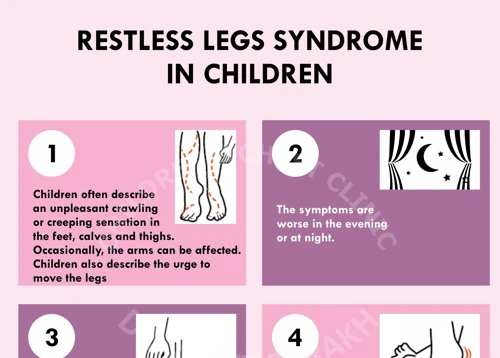Restless Leg Syndrome in children is a perplexing and often misunderstood condition that affects the quality of sleep and daily life for many young individuals. Characterized by an uncontrollable urge to move the legs, this condition can cause discomfort, restlessness, and a disrupted sleep pattern. Understanding the causes and solutions of Restless Leg Syndrome in children is crucial for parents and caregivers to provide appropriate support and relief. In this article, we will delve into the prevalence of this condition in children, explore its potential causes, discuss the symptoms and diagnosis, and provide strategies for managing and supporting children with Restless Leg Syndrome.
Understanding Restless Leg Syndrome
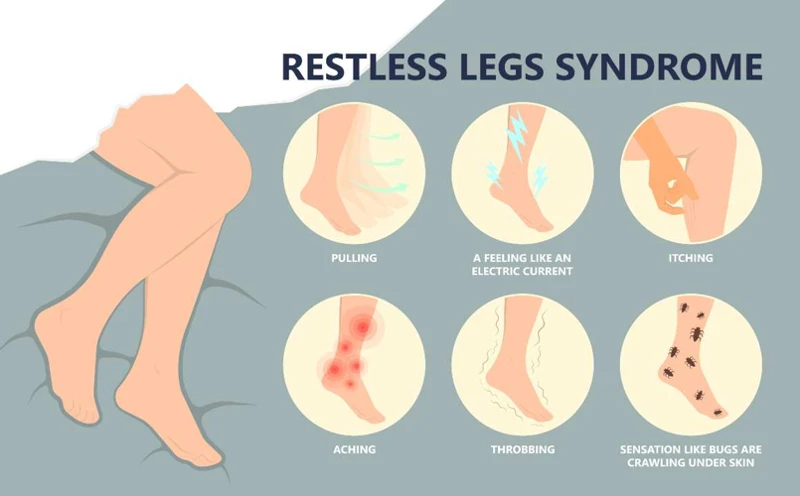
Restless Leg Syndrome, often referred to as RLS, is a perplexing condition that primarily affects the legs and causes an irresistible urge to move them. This condition, which predominantly occurs during periods of rest or inactivity, can significantly impact a child’s quality of sleep and overall well-being. RLS is primarily characterized by uncomfortable sensations in the legs, such as tingling, creeping, or aching, which can only be relieved through movement. While the exact cause of RLS is still not fully understood, research suggests a combination of genetic factors, iron deficiencies, medication side effects, and underlying health conditions may play a role. It’s essential to develop a deeper understanding of RLS to effectively manage and support children who experience this frustrating and disruptive condition.
What is Restless Leg Syndrome?
Restless Leg Syndrome (RLS) is a neurological disorder characterized by an irresistible urge to move the legs. This condition typically occurs during periods of rest or inactivity, such as when sitting or lying down. Individuals with RLS often describe unpleasant sensations, such as tingling, creeping, pulling, or aching, deep within their legs. These sensations can vary in intensity, from mild discomfort to severe distress, and can significantly disrupt sleep patterns and daily activities. It’s important to note that these sensations are temporarily relieved by movement, but they may return once the legs are at rest again. While the exact cause of RLS is unknown, researchers believe that abnormalities in the brain’s dopamine pathways and iron metabolism may contribute to the development of this condition. RLS can affect people of all ages, including children, and can have a significant impact on their overall well-being and quality of life. To further explore the potential connection between RLS and anxiety, you can refer to our article on RLS and Anxiety.
Prevalence in Children
The prevalence of Restless Leg Syndrome in children is a subject of great interest in medical research. While primarily thought of as an adult condition, recent studies have shown that RLS can also affect children, albeit at lower rates. The exact prevalence of RLS in children varies among different populations, with estimates ranging from 0.5% to 4.6%. Research suggests that RLS may be slightly more common in boys than in girls. It is important to note, however, that the prevalence rates may be underestimated due to underdiagnosis and misdiagnosis, as it can be challenging for children to express their symptoms accurately. RLS in children can adversely impact their well-being, leading to daytime sleepiness, difficulties in school, and impaired cognitive functioning. Additionally, it can also have a significant effect on the overall quality of life of the child and their family. Understanding the prevalence of RLS in children is crucial for raising awareness, advocating for appropriate diagnosis and treatment, and providing support to those affected.
Causes of Restless Leg Syndrome in Children
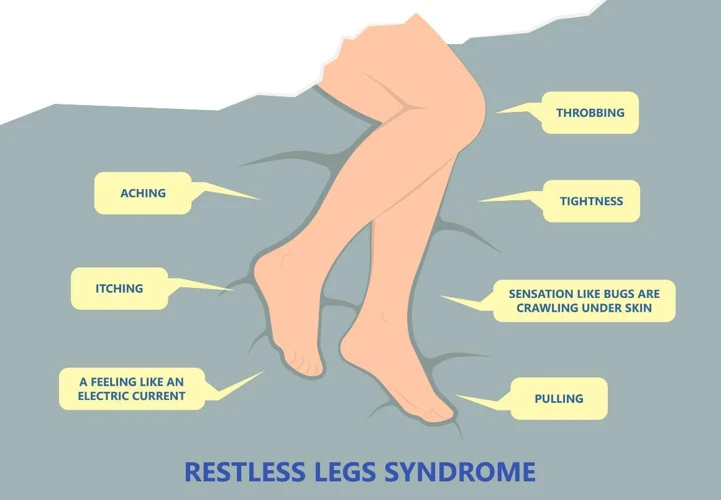
The causes of Restless Leg Syndrome in children can vary, and understanding them is essential for effective management and treatment. While the exact cause of RLS is not fully understood, there are several factors that may contribute to its development. Genetic factors could play a role, as RLS tends to run in families. Additionally, iron and nutritional deficiencies have been linked to the onset and severity of RLS symptoms. Children who have a deficiency in iron, folate, magnesium, or vitamin B12 may be at a higher risk. Medications, such as certain antidepressants or antihistamines, can also trigger or worsen RLS symptoms. Finally, underlying health conditions like attention deficit hyperactivity disorder (ADHD) or other neurological disorders might be associated with RLS in children. By identifying and addressing these potential causes, parents and healthcare providers can work together to find effective solutions and alleviate the discomfort and disturbance caused by Restless Leg Syndrome.
Genetic Factors
Genetic factors are believed to contribute significantly to the development of Restless Leg Syndrome (RLS) in children. Research has shown a strong familial link, with individuals having a family history of RLS being more likely to develop the condition themselves. Studies have identified specific gene variants associated with RLS, such as the BTBD9 and MEIS1 genes, which are involved in the regulation of iron transport and dopamine receptor activity. These genetic factors disrupt the normal functioning of the brain, leading to the characteristic symptoms of RLS. While the exact mechanisms are not yet fully understood, these genetic variations are thought to contribute to abnormalities in the dopamine system and iron regulation, both of which play crucial roles in RLS. Understanding the genetic factors at play can help healthcare providers better identify and manage RLS in children.
/restless-leg-syndrome-pregnancy/
Iron and Nutritional Deficiencies
Iron and nutritional deficiencies can contribute to the development or worsening of Restless Leg Syndrome (RLS) in children. Iron plays a crucial role in the production and regulation of dopamine, a neurotransmitter involved in the brain’s movement control. When iron levels are insufficient, dopamine regulation can be disrupted, leading to the manifestation of RLS symptoms. Inadequate intake or absorption of iron-rich foods, such as lean meats, poultry, fish, leafy green vegetables, and fortified cereals, can contribute to iron deficiencies. Alongside iron, other nutritional deficiencies, including folate, magnesium, and vitamin B12, have also been associated with RLS. It is important for parents and caregivers of children with RLS to ensure they receive a balanced and nutritious diet rich in these essential nutrients. Additionally, dietary supplements may be recommended under the guidance of a healthcare professional to address specific deficiencies. Regular monitoring of the child’s iron levels through blood tests can help determine if supplementation is necessary. Maintaining optimal nutrition will not only help manage RLS symptoms but also contribute to overall well-being and healthy sleep patterns. For more information on the impact of RLS on sleep, you can refer to the Restless Leg Syndrome and its Impact on Sleep article.
Medication Side Effects
Medication Side Effects can also contribute to the development or worsening of Restless Leg Syndrome (RLS) in children. Certain medications, such as antihistamines, antidepressants, and antipsychotics, have been known to trigger or exacerbate RLS symptoms. Antihistamines, commonly used to treat allergies, can cause drowsiness and muscle relaxation, which may lead to increased restlessness in the legs. Similarly, antidepressant medications, specifically selective serotonin reuptake inhibitors (SSRIs), can have an impact on the chemicals in the brain that regulate movement and sensory perceptions, potentially leading to RLS symptoms. In some cases, antipsychotic medications, prescribed for conditions like ADHD or schizophrenia, have been associated with the development of RLS symptoms in children. These medications may alter dopamine levels in the brain, which can contribute to RLS symptoms. It’s important to note that while medication side effects can contribute to RLS symptoms, it doesn’t mean that all children who take these medications will experience RLS. If you suspect that your child’s medication may be causing or worsening their RLS symptoms, it is crucial to consult with their healthcare provider to explore alternative medication options or adjust the dosage. [source]
Underlying Health Conditions
Underlying health conditions can contribute to the development or exacerbation of Restless Leg Syndrome in children. Certain medical conditions have been found to be associated with RLS symptoms in children. One such condition is attention deficit hyperactivity disorder (ADHD). Studies have shown that children diagnosed with ADHD are more likely to experience restless leg symptoms compared to those without the disorder. Additionally, conditions such as autism spectrum disorder and tic disorders have also been linked to Restless Leg Syndrome in children. The relationship between these conditions and RLS is not yet fully understood, but researchers believe that disruptions in brain chemistry and neurotransmitter imbalances may be contributing factors. (Source: [INSERT LINK TO RELEVANT ANCHOR TEXT ON RESTLESS LEG SYNDROME AND ADHD]) It is important for healthcare providers to thoroughly evaluate children with Restless Leg Syndrome to identify any underlying health conditions that may be present. By addressing and managing these conditions, it may be possible to alleviate RLS symptoms in children and improve their overall well-being.
Symptoms of Restless Leg Syndrome in Children
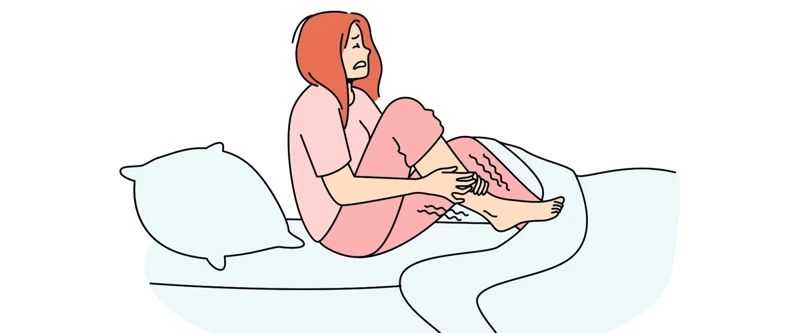
Restless Leg Syndrome in children manifests through a range of specific symptoms that distinguish it from other conditions. It is essential to recognize these symptoms to identify and seek appropriate treatment for children with RLS:
1. Leg discomfort: Children with RLS often experience uncomfortable sensations in their legs, such as itching, tingling, or a crawling feeling. They may describe these sensations as “creepy-crawly” or “ants under the skin.”
2. Urge to move legs: A hallmark symptom of RLS is an overwhelming and uncontrollable urge to move the legs to alleviate the discomfort. Children may feel restless and unable to sit or lie still due to this sensation.
3. Worsening in the evening or at night: The symptoms of RLS tend to worsen during periods of rest or inactivity, especially in the evening or at nighttime. This can interfere with a child’s ability to fall asleep or maintain a restful sleep throughout the night.
4. Improvement with movement: The discomfort and urge to move the legs experienced with RLS are usually relieved temporarily through physical activity or movement. Children may instinctively shake or stretch their legs to obtain relief.
5. Disrupted sleep pattern: Restless Leg Syndrome can significantly impact a child’s sleep quality. The discomfort and need to move can lead to frequent awakenings throughout the night, causing daytime sleepiness, irritability, and difficulty concentrating.
6. Daytime leg discomfort: In some cases, children with RLS may also experience leg discomfort or an urge to move their legs during the daytime. This can affect their ability to engage in normal daily activities and may result in reduced focus and attention.
7. Emotional impact: Living with RLS can have an emotional impact on children. They may feel frustrated, anxious, or even embarrassed by their symptoms, especially if they don’t fully understand the condition or if it interferes with their daily activities.
It’s important for parents, caregivers, and healthcare professionals to be aware of these symptoms and monitor their presence or progression in children suspected to have Restless Leg Syndrome.
Diagnosing Restless Leg Syndrome in Children
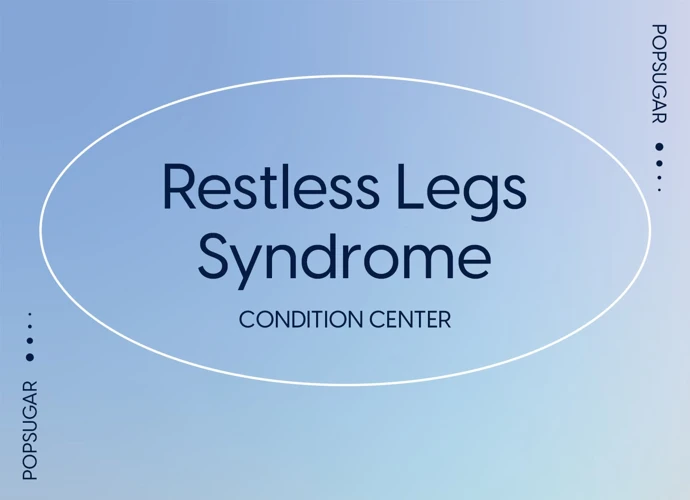
Diagnosing Restless Leg Syndrome in children can be a complex process that involves a thorough medical history and physical examination. During the assessment, the healthcare provider will inquire about the child’s symptoms, their frequency, and the impact on their daily life. Laboratory tests, such as blood tests, may be conducted to check for iron levels and rule out any underlying health conditions that may contribute to the symptoms. It is important for parents and caregivers to provide accurate and detailed information to facilitate an accurate diagnosis. This comprehensive approach allows healthcare professionals to differentiate Restless Leg Syndrome from other conditions and develop an appropriate treatment plan tailored to the child’s specific needs.
Medical History and Physical Examination
To diagnose Restless Leg Syndrome (RLS) in children, medical professionals typically begin with a comprehensive medical history and physical examination. The medical history involves detailed discussions with the child and their parents or caregivers, focusing on the child’s symptoms, their frequency and duration, and any potential factors that might trigger or alleviate the symptoms. This information helps doctors rule out other conditions that may present similar symptoms. During the physical examination, doctors will carefully examine the child’s legs, checking for any visible signs of swelling, redness, or abnormalities. They may also assess the child’s reflexes, muscle tone, and overall neurological function. This examination helps doctors identify any physical signs that may indicate underlying health conditions contributing to the Restless Leg Syndrome symptoms. In some cases, doctors may also request additional tests, such as blood tests or polysomnography, to further evaluate the child’s condition and rule out any other potential causes. A thorough medical history and physical examination are essential steps in accurately diagnosing Restless Leg Syndrome in children and establishing an appropriate treatment plan.
Laboratory Tests
Laboratory tests can be a valuable tool in diagnosing Restless Leg Syndrome (RLS) in children. Although there is no specific test to confirm RLS, certain laboratory tests can help rule out other underlying conditions and provide useful information for diagnosis. One common test is a complete blood count (CBC) to check for iron deficiency or anemia, as these conditions can contribute to RLS symptoms. Additionally, serum ferritin levels may be measured to assess iron stores in the body. Low ferritin levels have been associated with RLS, making this test an important indicator.
Another useful laboratory test is a vitamin and mineral panel. Deficiencies in certain vitamins, such as folate, vitamin B12, and magnesium, can contribute to RLS symptoms or exacerbate existing ones. Evaluating the levels of these nutrients can provide insight into the potential underlying causes of RLS in children. Urine and blood tests may also be conducted to rule out other conditions or disorders that may mimic RLS symptoms.
It’s important to note that laboratory tests alone are not sufficient for diagnosing RLS, but they are an essential part of the diagnostic process. These tests, combined with a thorough medical history and physical examination, can help healthcare professionals rule out other possible causes and provide a more accurate diagnosis. It is recommended to discuss the results of these tests with a healthcare professional who specializes in sleep disorders and Restless Leg Syndrome to determine the most appropriate course of treatment and management for children with RLS.
Treatment Options for Restless Leg Syndrome in Children
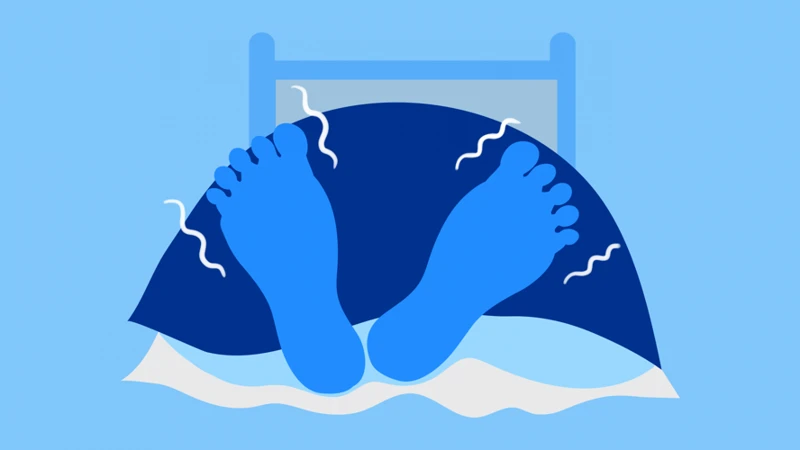
When it comes to the treatment of Restless Leg Syndrome in children, there are various options available to help alleviate symptoms and improve overall well-being. Lifestyle changes and sleep hygiene practices can play a significant role in managing RLS. This includes establishing a consistent sleep schedule, creating a comfortable sleep environment, and avoiding certain stimulants like caffeine. Iron and nutritional supplements may be recommended if deficiencies are identified through laboratory tests, as maintaining adequate levels can reduce RLS symptoms. In some cases, medication may be prescribed to relieve discomfort and improve sleep. Medications such as dopamine agonists or anticonvulsants can be effective in managing symptoms. Additionally, alternative therapies such as massage, acupuncture, or physical therapy may provide relief for some children. It’s important to work closely with healthcare professionals to determine the most suitable treatment plan for each child, taking into consideration their specific needs and circumstances.
Lifestyle Changes and Sleep Hygiene
Implementing lifestyle changes and maintaining proper sleep hygiene can greatly improve the symptoms of Restless Leg Syndrome in children. Encouraging regular exercise, especially activities that promote leg movement, can help reduce the restless sensations in the legs. Engaging in activities such as walking, swimming, or biking can not only help alleviate the discomfort but also promote overall well-being. Maintaining a consistent sleep schedule is crucial, ensuring that children have a regular bedtime and wake-up time. Creating a relaxing bedtime routine can signal to the body that it’s time to wind down and prepare for sleep. This may include activities such as taking a warm bath, reading a book, or listening to calming music. It’s important to create a sleep environment that is comfortable and free from distractions, such as excessive noise or light. Additionally, avoiding caffeine and electronic devices close to bedtime can help improve sleep quality. Making these lifestyle changes and prioritizing good sleep hygiene can contribute to a better night’s rest for children with Restless Leg Syndrome.
Iron and Nutritional Supplements
Iron and nutritional supplements play a vital role in the management and treatment of Restless Leg Syndrome (RLS) in children. Iron deficiency has been identified as a potential contributing factor to the development and severity of RLS symptoms. Incorporating iron-rich foods into a child’s diet or taking iron supplements can help alleviate symptoms. Foods rich in iron include lean meats, poultry, beans, leafy green vegetables, and fortified cereals. It’s important to note that iron supplements should only be taken under the guidance of a healthcare professional to ensure proper dosage and monitoring. In addition to iron, other nutritional deficiencies, such as vitamin D and magnesium, can also contribute to RLS symptoms. It may be beneficial to consider incorporating these nutrients through a balanced diet or supplements. However, it’s crucial to consult with a healthcare provider before starting any supplementation regimen, as excessive intake of certain nutrients can have adverse effects.
Medication
When lifestyle changes and other non-pharmacological methods prove ineffective in managing Restless Leg Syndrome symptoms in children, medication options may be considered. It is important to note that medication should only be prescribed by a qualified healthcare professional, and the decision to use medication should be based on a thorough evaluation of the child’s condition and medical history. Here are some common medications used to alleviate Restless Leg Syndrome symptoms in children:
1. Dopamine agonists: These medications work by increasing dopamine levels in the brain, which helps regulate movement and reduce the urge to move the legs. Examples of dopamine agonists commonly prescribed for children with RLS include pramipexole and ropinirole.
2. Benzodiazepines: Benzodiazepines are sedative medications that can help calm the nervous system and provide relief from RLS symptoms. They are often prescribed for children with severe symptoms that significantly affect their sleep. Examples of benzodiazepines used for RLS include clonazepam and diazepam.
3. Gabapentin enacarbil: This medication is primarily used to treat seizures but has been found to be effective in reducing RLS symptoms as well. It works by altering the levels of certain chemicals in the brain that are involved in pain and seizure control.
It is crucial to closely monitor the child’s response to medication, as different individuals may respond differently. Additionally, potential side effects and interactions with other medications should be discussed with the prescribing healthcare professional. Regular follow-ups with the healthcare provider are necessary to assess the effectiveness of the medication and make any necessary adjustments.
Note: Medication should always be considered as a last resort and used in conjunction with other treatment approaches and lifestyle changes. The decision to start or stop medication should always be made in consultation with a healthcare professional.
Alternative Therapies
Alternative therapies can provide additional relief for children with Restless Leg Syndrome (RLS) and complement conventional treatment methods. While they may not be backed by extensive scientific evidence, many individuals have reported positive outcomes from these approaches. One such alternative therapy is acupuncture, which involves the insertion of thin needles into specific points on the body to stimulate energy flow and promote relaxation. Acupuncture has been known to alleviate RLS symptoms and improve sleep quality. Another alternative therapy worth considering is massage therapy, which can help reduce muscle tension and promote relaxation. Massaging the legs with gentle pressure and using techniques such as stretching and kneading can provide temporary relief from RLS discomfort. Some children may also find relief through the practice of yoga or meditation, which focus on deep breathing, relaxation, and mindfulness. These practices help calm the mind and body, potentially reducing overall restlessness. Keep in mind that alternative therapies may vary in effectiveness for different individuals, and it’s important to consult with a healthcare professional before exploring these options for your child. Adding alternative therapies to their treatment plan may provide supplementary relief and improve their overall well-being.
Coping Strategies for Children with Restless Leg Syndrome

One of the key aspects of managing Restless Leg Syndrome (RLS) in children is to help them develop coping strategies that can alleviate symptoms and improve their overall well-being. Here are some effective coping strategies to consider:
1. Regular Exercise: Encourage your child to engage in regular physical activity during the day. Exercise can help reduce restlessness and provide relief to their legs. Activities like biking, swimming, or running can be beneficial. However, it’s important to avoid excessive exercise close to bedtime as it may interfere with sleep.
2. Warm Baths or Massages: A warm bath before bedtime or a gentle leg massage can help relax your child’s muscles and ease the discomfort associated with RLS. Consider using lavender or chamomile-scented products, as they have calming properties that may enhance relaxation.
3. Stretching and Yoga: Teach your child some simple stretching exercises or basic yoga poses that specifically target the legs. These movements can help relieve muscle tension and promote a sense of calmness.
4. Establish a Bedtime Routine: Consistency is key when it comes to managing RLS symptoms in children. Establish a relaxing bedtime routine that includes activities such as reading a book, listening to soft music, or practicing deep breathing exercises. This routine can signal to the body that it’s time to wind down and prepare for sleep.
5. Distraction Techniques: Encourage your child to distract their mind from the discomfort by engaging in activities that they enjoy. This can include reading, drawing, solving puzzles, or playing quiet games. Distraction can help shift their focus away from the discomfort and promote a sense of relaxation.
6. Cooling Therapy: Some children find relief from RLS symptoms by applying cool or cold packs to their legs. Experiment with different types of temperature therapy to find what works best for your child. Ensure that the packs are wrapped in a cloth to prevent direct contact with the skin and avoid extreme cold temperatures.
By implementing these coping strategies, parents and caregivers can help children manage Restless Leg Syndrome more effectively and improve their overall sleep quality. However, it’s important to consult with a healthcare professional for personalized guidance and to explore additional treatment options if necessary.
Supporting Your Child with Restless Leg Syndrome
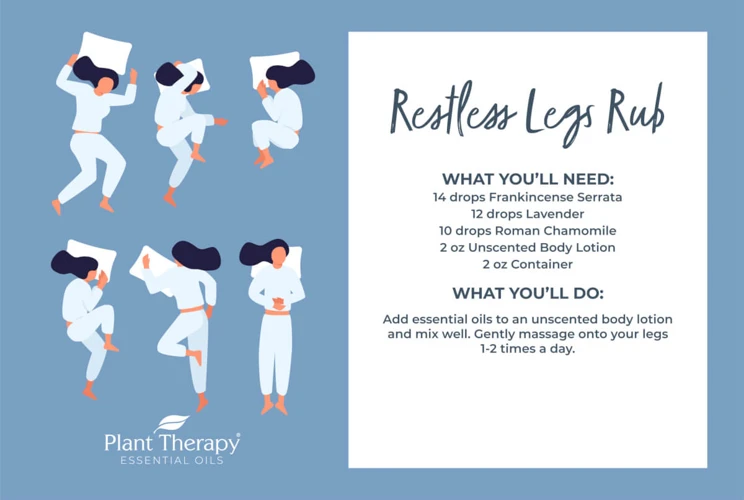
Supporting your child with Restless Leg Syndrome can significantly improve their overall well-being and help them better cope with the symptoms. Here are some strategies to consider:
1. Communication and Understanding: Take the time to talk to your child about their experience with Restless Leg Syndrome. Validate their feelings and let them know that you are there to support them. Encourage open communication so that they feel comfortable discussing any discomfort or challenges they may be facing.
2. Establish a Routine: Creating a consistent bedtime routine can be beneficial for children with RLS. Ensure that their bedtime routine includes activities that promote relaxation, such as reading a book or taking a warm bath. Consistency and a calming environment can help minimize symptoms and encourage better sleep.
3. Provide Comfort and Support: Help your child find optimal positions and strategies to alleviate discomfort. Experiment with different pillows, blankets, or mattresses that provide the right level of support and comfort. Encourage them to use heat or cold packs on their legs to ease any discomfort.
4. Encourage Regular Exercise: Regular physical activity can help reduce Restless Leg Syndrome symptoms. Encourage your child to engage in activities that they enjoy, such as swimming, cycling, or dancing. Be mindful of avoiding intense exercise close to bedtime, as it may stimulate the legs and disrupt sleep.
5. Keep a Sleep Diary: Tracking your child’s sleep patterns and noting any triggers or patterns can provide valuable insights. Encourage them to keep a sleep diary where they can document their bedtime routine, symptoms experienced, and any factors that may have contributed to worsened or improved sleep.
6. Seek Support from Healthcare Professionals: If your child’s Restless Leg Syndrome symptoms are severe or significantly impacting their quality of life, consult with a healthcare professional. They can assess your child’s condition, provide further guidance, and explore potential treatment options.
Remember, each child’s experience with Restless Leg Syndrome may vary, so it’s essential to tailor the support and strategies to their specific needs. A combination of understanding, communication, and practical interventions can go a long way in helping your child manage and cope with Restless Leg Syndrome.
Tips for Better Sleep with Restless Leg Syndrome
There are various strategies and tips that can help children with Restless Leg Syndrome (RLS) achieve better sleep and alleviate the discomfort associated with the condition. Here are some effective ways to improve sleep quality for children with RLS:
1. Establish a Consistent Bedtime Routine: Creating a structured bedtime routine can signal to the body that it’s time to wind down and prepare for sleep. This routine can include activities such as a warm bath, reading a book, or listening to calming music.
2. Create a Comfortable Sleep Environment: Ensure that your child’s sleep environment promotes relaxation and comfort. Make sure the bedroom is dark, quiet, and at a cool temperature. Consider using blackout curtains, a white noise machine, or a fan to create a soothing atmosphere.
3. Encourage Regular Exercise: Engaging in regular physical activity during the day can help reduce RLS symptoms and promote better sleep at night. Encourage your child to participate in activities such as swimming, biking, or walking. However, it is important to avoid vigorous exercise close to bedtime, as it can be stimulating.
4. Practice Relaxation Techniques: Teach your child relaxation techniques like deep breathing exercises, progressive muscle relaxation, or guided imagery. These techniques can help calm restless legs and promote a state of relaxation conducive to sleep.
5. Limit Stimulants: Caffeine, nicotine, and sugary snacks can aggravate RLS symptoms and interfere with sleep. Limit your child’s consumption of these substances, particularly in the evening, to improve sleep quality.
6. Maintain a Regular Sleep Schedule: Consistency in sleep schedule is important for children with RLS. Encourage your child to go to bed and wake up at the same time every day, even on weekends. This can help regulate their internal body clock and improve sleep patterns.
7. Use Compression Therapy: Some individuals with RLS find relief by applying pressure or using compression garments on their legs. Consult with a healthcare professional to determine if compression therapy could be beneficial for your child.
Remember, every child is unique, and what works for one may not work for another. It’s important to tailor these tips to your child’s specific needs and consult with a healthcare professional for personalized guidance and treatment options.
Conclusion
In conclusion, Restless Leg Syndrome in children can be a challenging condition that significantly impacts their quality of life. It is important for parents, caregivers, and healthcare professionals to be aware of the causes, symptoms, and available treatment options. By understanding the potential genetic factors, iron and nutritional deficiencies, medication side effects, and underlying health conditions associated with RLS, we can better address and manage the condition in children. It is crucial to consult with a healthcare professional for a proper diagnosis and to develop an individualized treatment plan for each child. Lifestyle changes, such as improving sleep hygiene and incorporating relaxation techniques, can provide some relief. Additionally, iron and nutritional supplements, when necessary, may help alleviate symptoms. Medication and alternative therapies can also be explored under the guidance of a healthcare professional. Moreover, providing emotional support, coping strategies, and creating a conducive sleep environment can greatly assist children with RLS. By taking a proactive approach and seeking appropriate medical care, we can help children with Restless Leg Syndrome lead more comfortable and fulfilling lives.
Frequently Asked Questions
How common is Restless Leg Syndrome in children?
Restless Leg Syndrome is more prevalent in adults, but it can also affect children, with estimates suggesting that around 2% to 4% of children may experience symptoms.
What causes Restless Leg Syndrome in children?
The exact cause of Restless Leg Syndrome in children is not fully understood. However, it is believed to be influenced by factors such as genetics, iron deficiencies, medication side effects, and underlying health conditions.
What are the symptoms of Restless Leg Syndrome in children?
Common symptoms of Restless Leg Syndrome in children include uncomfortable sensations in the legs, an irresistible urge to move the legs, difficulty falling asleep or staying asleep, and daytime fatigue.
How is Restless Leg Syndrome in children diagnosed?
Diagnosing Restless Leg Syndrome in children involves a combination of medical history evaluation, physical examination, and, in some cases, laboratory tests to rule out other possible causes for the symptoms.
Can lifestyle changes and sleep hygiene practices help manage Restless Leg Syndrome?
Yes, adopting healthy sleep habits and making positive lifestyle changes such as maintaining a regular sleep schedule, engaging in regular exercise, and minimizing caffeine intake can help improve the symptoms of Restless Leg Syndrome in children.
Are there any specific medications for treating Restless Leg Syndrome in children?
There are some medications that can be prescribed to manage Restless Leg Syndrome symptoms in children. However, medication options may vary depending on the child’s age, overall health, and the severity of their symptoms.
Are there alternative therapies that can provide relief for Restless Leg Syndrome in children?
Yes, alternative therapies such as massage, warm baths, relaxation techniques, and certain complementary therapies like acupuncture or yoga may offer relief for some children with Restless Leg Syndrome. However, it’s important to consult with a healthcare professional before pursuing any alternative treatments.
Can parents or caregivers help their child cope with Restless Leg Syndrome?
Absolutely! Parents and caregivers can provide support and comfort to children with Restless Leg Syndrome by creating a conducive sleep environment, practicing relaxation techniques, and encouraging healthy lifestyle habits to manage symptoms effectively.
Is Restless Leg Syndrome a lifelong condition for children?
In many cases, Restless Leg Syndrome in children may improve or even resolve as they grow older. However, some children may continue to experience symptoms into adulthood. Regular monitoring and proper management can help alleviate the impact of this condition on a child’s daily life.

